Results 10,831 to 10,840 of 12089
Thread: Anandtech News
-
10-20-20, 12:06 PM #10831
Anandtech: SK Hynix to Buy Intel’s NAND Memory Business For $9 Billion
In a joint press release issued early this morning, SK Hynix and Intel have announced that Intel will be selling the entirety of its NAND memory business to SK Hynix. The deal, which values Intel’s NAND holdings at $9 billion, will see the company transfer over the NAND business in two parts, with SK Hynix eventually acquiring all IP, facilities, and personnel related to Intel’s NAND efforts. Notably, however, Intel is not selling their overarching Non-Volatile Memory Solutions Group; instead the company will be holding on to their Optane memory technology as they continue to develop and sell that technology.
More...
-
10-20-20, 02:52 PM #10832
Anandtech: Silicon Motion Launches PCIe 4.0 NVMe SSD Controllers
Silicon Motion has announced the official launch of their first generation of PCIe 4.0-capable NVMe SSD controllers. These controllers have been on the roadmap for quite a while and have been previewed at trade shows, but the first models are now shipping. The high-end SM2264 and mainstream SM2267/SM2267XT controllers will enable consumer SSDs that move beyond the performance limits of the PCIe 3.0 x4 interface that has been the standard for almost all previous consumer NVMe SSDs.
The high-end SM2264 controller is the successor to Silicon Motion's SM2262(EN) controllers, and the SM2264 brings the most significant changes that add up to a doubling of performance. The SM2264 still uses 8 NAND channels, but now supporting double the speed: up to 1600MT/s. The controller includes four ARM Cortex R8 cores, compared to two cores on SMI's previous client/consumer NVMe controllers. As with most SSD controllers aiming for the high end PCIe 4.0 product segment, the SM2264 is fabbed on a smaller node: TSMC's 12nm FinFET process, which allows for substantially better power efficiency than the 28nm planar process used by the preceding generation of SSD controllers. The SM2264 also includes support for some enterprise-oriented features like SR-IOV virtualization, though we probably won't see that enabled on consumer SSD products. The SM2264 also includes the latest generation of Silicon Motion's NANDXtend ECC system, which switches from a 2kb to 4kB codeword size for the LDPC error correction.
The SM2264 controller will be competing with in-house controllers used by Samsung and Western Digital for their flagship consumer SSDs, and against the upcoming Phison E18 controller. Phison's E16 controller was the first consumer PCIe 4.0 controller to hit the market, but is now being outclassed by a second wave of PCIe 4.0 controllers that come much closer to using the full potential of a PCIe 4.0 x4 interface. The SM2264 controller is currently sampling to drive vendors, but we don't have an estimate for when products will be hitting the shelves.
For the more mainstream product segments, Silicon Motion's SM2267 and SM2267XT controllers are the replacements for the SM2263 and SM2263XT. These will help bring entry-level NVMe performance up to about the level that used to be standard for high-end PCIe 3.0 SSDs. The SM2267XT is the DRAMless variant of the SM2267 and also has half as many chip enables (CEs), which allow for a much smaller package size suitable for use on small form factors like M.2 2230. The SM2267(XT) controllers are still manufactured on the cheaper 28nm process. The SM2267 and SM2267XT controllers are in mass production and the first products using those parts have also entered the supply chain: we already have a sample of ADATA's Gammix S50 Lite with the SM2267 controller on our test bench.Silicon Motion Client/Consumer NVMe SSD Controllers SM2263(XT) SM2267(XT) SM2262EN SM2264 Market Segment Mainstream Consumer High-End Consumer Manufacturing
Process28nm 28nm 28nm 12nm Arm CPU Cores 2x Cortex 2x Cortex R5 2x Cortex 4x Cortex R8 Error Correction 2kB LDPC 2kB LDPC 2kB LDPC 4kB LDPC DRAM Support LPDDR3, DDR4
-XT: NoneLPDDR4, DDR4
-XT: NoneLPDDR3, DDR4 LPDDR4, DDR4 Host Interface PCIe 3.0 x4 PCIe 4.0 x4 PCIe 3.0 x4 PCIe 4.0 x4 NAND Channels, Interface Speed 4ch
667 MT/s4ch
1200MT/s8ch
800MT/s8ch
1600MT/sCEs per Channel 4 8
-XT: 44 8 Sequential Read 2400 MB/s 3900 MB/s 3500 MB/s 7400 MB/s Sequential Write 1700 MB/s 3500 MB/s 3000 MB/s 6800 MB/s 4KB Random Read IOPS 300k
-XT: 280k500k 420k 1000k 4KB Random Write IOPS 250k 500k 420k 1000k
The SM2267 will be competing against a mix of older 8-channel controllers like the Phison E12, and newer 4-channel solutions as seen in the SK hynix Gold P31. We expect this to be the most important consumer SSD product segment going into 2021 as these drives will not carry the steep price premium currently seen on high-end 8-channel PCIe 4.0 SSDs, and they'll still be plenty fast for almost all use cases. The DRAMless SM2267XT variant will be competing against controllers like the Phison E19T for entry-level NVMe SSDs that carry little or no price premium over SATA drives. These low-cost NVMe controllers are also increasingly popular for portable SSDs; the performance increases of the SM2267XT over the SM2263XT will not matter for drives using 20Gb/s USB to NVMe bridge chips, but will be helpful for Thunderbolt SSDs.
Related Reading- The Samsung 980 PRO PCIe 4.0 SSD Review: A Spirit of Hope
- Western Digital Launches New WD Black NVMe SSDs And Thunderbolt Dock
- CES 2020: ADATA Preparing Three PCIe 4.0 Consumer SSDs
- Silicon Motion: PCIe 4.0 x4 SSD Controller in Development, Coming Q2 2020
- Phison At CES 2020: Preparing For QLC To Go Mainstream
- Phison Previews Next-Gen PCIe 4.0 SSD Controllers: Up to 7 GB/s, NVMe 1.4
- Marvell Announces Client SSD Controllers With PCIe Gen4
More...
-
10-21-20, 10:44 AM #10833
Anandtech: Acer’s New Swift 3X Notebook, with Intel Iris X? MAX Discrete Graphics, fr
At Acer’s global press conference today, one of the hot ticket items was the announcement of an upcoming laptop featuring an Intel’s discrete graphics option. The new Intel Xe graphics architecture, which debuted in Intel 11th Gen Tiger Lake notebook processors, is now set to see the launch of an additional higher power discrete graphics option and coming to notebooks first. One of those devices will be the Acer Swift 3X, with both Tiger Lake and discrete Xe MAX inside.
More...
-
10-21-20, 10:44 AM #10834
Anandtech: Crucial Portable SSD X6 and X8 2TB Review: QLC for Storage On-the-Go
Bus-powered portable flash-based storage solutions are one of the growing segments in the consumer-focused direct-attached storage market. The emergence of 3D NAND with TLC and QLC has brought down the cost of such drives. NAND manufacturers like Western Digital, Samsung, and Crucial/Micron who also market portable SSDs have an inherent advantage in terms of vertical integration. Last year, Crucial/Micron had announced its entry into the segment with the QLC-based Crucial Portable SSD X8. A few months back, Crucial updated the lineup with a 2TB model while adding a lower-performance X6 member to the portfolio. Read on for our review of how these two high-capacity models fare in our evaluation.
More...
-
10-22-20, 01:08 PM #10835
Anandtech: Huawei Announces Mate 40 Series: Powered by 15.3bn Transistors 5nm Kirin 9
Today Huawei took the stage to unveil the new Mate 40 series of devices. In the form of the Mate 40, Mate 40 Pro and the Mate 40 Pro+, the new phones represent the company’s leading edge in terms of technology, mostly enabled by the new Kirin 9000 chipset which is manufactured on a new 5nm manufacturing node, promising great leaps in performance and efficiency.
The new phones also feature an updated design with a different camera layout, differentiated display design and improved speakers and charging features.
The new Kirin 9000 is are the core of the discussion – and it’s also Huawei’s biggest problem as the new silicon is no longer under production since September due to US sanctions on the company, representing a much more substantial threat than the already existing limitations on the company’s products, such as not being able to ship with Google Mobile Services.
More...
-
10-22-20, 09:13 PM #10836
Anandtech: Intel: DG1 GPU Now Shipping, Xe-HPG DG2 GPU In Labs
Alongside today’s profitable-but-uneasy earnings report from Intel, the company’s earnings presentation also offered a short update on the status of their discrete GPUs. As of today, Intel’s DG1 GPU is now shipping. Meanwhile the company announced their next GPU, appropriately named DG2, which is based on their upcoming Xe-HPG architecture. This GPU is now back from the fab and is in Intel’s lab, and is now far enough along to have been powered on.
First and foremost we have DG1, or as it’s better known by its commercial product name, Iris Xe Max. Intel’s first discrete GPU in over two decades, the company has since the beginning of this year been touting it as a companion to their Tiger Lake CPUs, pitching it as an upgraded graphics option for thin & light notebooks, and a successor of sorts to Intel’s GT3e and GT4e iGPU configurations from past generations. Until recently, we weren’t quite sure when it would show up in commercial products, but recent OEM notebook reveals along with Intel’s earnings announcement are now confirming that the GPU is shipping to OEMs. According to Intel, DG1-equipped notebooks are expected later in Q4. In the meantime, there are still scant few details on DG1 itself, such as expected performance and power consumption; so hopefully Intel will be getting ahead of its OEM partners on this one to set some expectations.
Meanwhile, today’s notes also announce for the very first time the next discrete GPU to come out of Intel, DG2. While obviously still some time off, Intel has completed tape-out and fabbing of the initial alpha silicon, with the company reporting that they’ve powered-on the GPU in their labs.
Somewhat surprisingly, CEO Bob Swan has also confirmed that this isn’t just a DG1 successor, but instead is a higher performing GPU based on the company’s forthcoming Xe-HPG(aming) architecture. First revealed this summer, Xe-HPG is Intel’s enthusiast/gamer-focused architecture, incorporating marquee features found in similar dGPUs like ray tracing. It’s also being manufactured completely external of Intel; while the company hasn’t said which fab and process node is being used, it’s none of Intel’s nodes. So this is the first major piece of external fabbed silicon that we know of to be up and running at Intel.
But like all teasers/financial disclosures, Intel isn’t saying too much more at this time. Nothing new was revealed about the Xe-HPG architecture, and Intel hasn’t clarified whether DG2 is a big, flagship-grade chip, or a more modest, high-volume part. For now, the company is simply saying that DG2 will “take our discrete graphics capability up the stack into the enthusiast segment.”
More...
-
10-22-20, 09:13 PM #10837
Anandtech: Intel Reports Q3 2020 Earnings: Still Very Profitable, But Challenging Tim
Once again kicking off our earnings season coverage for the tech industry is Intel, who reported their Q3 2020 financial results this afternoon. The traditional leader of the pack in more than one way, Intel has been under more intense scrutiny as of late, particularly due to their previously disclosed delay in their 7nm manufacturing schedule. None the less, Intel has been posting record revenues and profits in recent quarters – even with a global pandemic going on – which has been keeping Intel in good shape. It’s only now, with Q3 behind them, that Intel is starting to feel the pinch of market shifts and technical debt – and even then the company is still well into the black.
For the third quarter of 2020, Intel reported $18.3B in revenue. A drop of $0.9B over the year-ago quarter. As previously mentioned, Intel has been setting a string of record revenues in previous quarters, but the boom is coming to an end as margins and revenues are slipping. Those declines are also having the expected knock-on effect to Intel’s profitability, with the company reporting $4.3B in net income, a 29% drop versus Q3’19.
More...
-
10-26-20, 03:06 PM #10838
Anandtech: Akasa Turing Fanless Case Review: Unrivalled Noiseless NUC
Silent computing systems are preferable for a multitude of use-cases ranging from industrial applications (where dust and fans make for a troublesome configuration) to noiseless HTPCs (particularly for audiophiles). Akasa has been providing thermal solutions in multiple computing verticals for more than 20 years, with a particular focus on passive cooling. They have been targeting NUCs since the launch of the Ivy Bridge version in early 2013. The NUC solution was completely re-imagined with the launch of the Turing fanless case for the Bean Canyon NUCs.
More...
-
10-27-20, 10:00 AM #10839
Anandtech: AMD in $35 Billion All-Stock Acquisition of Xilinx
After a couple of weeks of rumor, as well as a couple of years of hearsay, AMD has gone feet first into a full acquisition of FPGA manufacturer Xilinx. The deal involves an all-stock transaction, leveraging AMD’s sizeable share price in order to enable an equivalent $143 per Xilinx share – current AMD stockholders will still own 74% of the combined company, while Xilinx stockholders will own 26%. The combined $135 billion entity will total 13000 engineers, and expand AMD’s total addressable market to $110 Billion. It is believed that the key reasons for the acquisition lie in Xilinx’s adaptive computing solutions for the data center market.
AMD CEO Dr. Lisa Su“Our acquisition of Xilinx marks the next leg in our journey to establish AMD as the industry’s high performance computing leader and partner of choice for the largest and most important technology companies in the world. This is truly a compelling combination that will create significant value for all stakeholders, including AMD and Xilinx shareholders who will benefit from the future growth and upside potential of the combined company. The Xilinx team is one of the strongest in the industry and we are thrilled to welcome them to the AMD family. By combining our world-class engineering teams and deep domain expertise, we will create an industry leader with the vision, talent and scale to define the future of high performance computing.”Xilinx CEO Victor Peng“We are excited to join the AMD family. Our shared cultures of innovation, excellence and collaboration make this an ideal combination. Together, we will lead the new era of high performance and adaptive computing. Our leading FPGAs, Adaptive SoCs, accelerator and SmartNIC solutions enable innovation from the cloud, to the edge and end devices. We empower our customers to deploy differentiated platforms to market faster, and with optimal efficiency and performance. Joining together with AMD will help accelerate growth in our data center business and enable us to pursue a broader customer base across more markets.”Details
As part of the acquisition, Victor Peng will join AMD as president responsible for the Xilinx business, and at least two Xilinx directors will join the AMD Board of Directors upon closing.
Part of the enablement of the acquisition is AMD leveraging its market capitalization of ~$100 billion, and a lot of the industry will draw parallels of Intel’s acquisition of FPGA-manufacturer Altera in December 2015 for $16.7 billion. The high-performance FPGA markets, as well as SmartNICs, adaptive SoCs, and other controllable logic, reside naturally in the data center markets more than most other markets. With AMD’s recent growth in the enterprise space with its Zen-based EPYC processor lines, a natural evolution one might conclude would be synergizing high-performance compute with adaptable logic under one roof, which is precisely the conclusion that Intel also came to several years ago. AMD reported last quarter that it had broken above the 10% market share in Enterprise with its EPYC product lines, and today’s earnings call is also expected to see growth. AMD is already reporting revenue up +56% year on year company-wide, with +116% in the Enterprise, Embedded, and Semi-Custom markets.
The press release states that AMD expects to save $300m in synergistic operational efficiencies within 18 months of closing, due to streamlining shared infrastructure. The deal has been unanimously approved by both sets of directors, and is subject to approval of both sets of shareholders. The transaction is expected to close by the end of Calendar Year 2021.
AMD shares are currently down 5% before the market opens. A conference call will be held at 8am ET to discuss AMD’s Third Quarter Financial results and acquisition plans.
Portfolio
AMD's key product lines includes its Zen based processor lines such as Ryzen and EPYC, its Graphics division for Radeon and Radeon Instinct, and its semi-custom and embedded division which has been developing the latest generation of console processors for both Sony and Microsoft.
Xilinx recently entered the market with its Versal Alveo Adaptive SoCs, built as combination programmable logic plus hardened compute logic and specialized co-processors and accelerators. Its FPGA families include Spartan, Zynq, Artix, Kintex, Virtex, and Virtex Ultrascale, used in a wide variety of commercial, embedded, and enterprise markets, including the hardware used to design processors of the future.
Source: Press Release
More...
-
10-27-20, 12:28 PM #10840
Anandtech: AMD Reports Q3 2020 Earnings: Making Money and Settings Records Yet Again
As part of this morning’s announcement from AMD that the company would be buying FPGA maker Xilinx for $35 billion in stock, the company also released its Q3 earnings report alongside the buyout news. An atypical earnings release to say the least, an early-morning release allowed AMD investors and others to get a look at the very latest in AMD’s financials while also digesting the decision to use the company’s sizable market capitalization to buy another company – and ultimately to help AMD justify why they’re in such a good position now to make the transaction. Coming on the heels of a record Q2 for the company, AMD closed out the third quarter of the year setting revenue records once again all the while trebling its profits.
For the third quarter of 2020, AMD reported $2.8B in revenue, a 56% jump over the same quarter a year ago. As a result, AMD has once again set new revenue records for the company, posting both their best Q3 ever, and their best single quarter period. Driving this was further growth in both of AMD’s major segments, with everything from consumer CPU sales to EPYC and semi-custom sales reported as being on the rise.
Most eye-popping, perhaps, has been AMD’s net income, which more than trebled over the year-ago quarter. For Q3’20, AMD booked $390M in GAAP net income, a 225% increase that dwarfs the $120M they took home at this point last year. Even on a quarterly basis AMD’s revenues and profits were up significantly across the board, with AMD again more than doubling its net income versus Q2. In fact the only aspect of AMD’s financials not showing significant growth at the moment is AMD’s gross margin, which at 44% is only up 1% over last year. According to the company, GM growth is being limited by relatively low margin semi-custom sales, with the PS5/XSX ramp-up counterbalancing the increase in CPU sales.AMD Q3 2020 Financial Results (GAAP) Q3'2020 Q3'2019 Q2'2020 Revenue $2.8B $1.8B $1.93B Gross Margin 44% 43% 44% Operating Income $449M $186M $173M Net Income $390M $120M $157M Earnings Per Share $0.32 $0.11 $0.13
Breaking down the numbers by segment, AMD’s Computing and Graphics segment enjoyed a strong quarter based in large part on an increase in Ryzen processor sales. Overall the segment booked $1.67B in revenue, which is up 31% over the year-ago quarter. Carrying the segment were sizable increases in both AMD’s desktop and notebook CPU shipments, with AMD reporting double-digit growth in both and setting a new record for notebook processor shipments. AMD’s graphics division was the odd man out, however; the run-up to the RX 6000 series means that graphics revenue was down versus Q3’19.
As for product average selling prices (ASPs), AMD is reporting that both client processor and graphics ASPs have taken a hit on a yearly basis. Graphics ASPs were down due to AMD’s current-generation RX 5000 products approaching the end of their lifecycle, while CPU ASPs declined due to higher sales of mobile chips, which tend to carry lower prices. Both of these should change for AMD in the next quarter, as the launch of Zen 3 and the Radeon RX 6000 series will put a fresh round of products on the market that can fetch higher prices.AMD Q3 2020 Computing and Graphics Q3'2020 Q3'2019 Q2'2020 Revenue $1667M $1276M $1367M Operating Income $384M $179M $200M
Meanwhile, AMD’s Enterprise, Embedded, and Semi-Custom segment saw another greater quarter with Q3, with shipments of everything from EPYC processors to console SoCs on the rise. With the former, AMD has continued to grow its market share in the server space, and on the company’s earnings call CEO Dr. Lisa Su confirmed that server sales have more than doubled over Q3’19, citing improved cloud and enterprise adoption. Meanwhile the ramp-up for the Playstation 5 and Xbox Series X has pushed semi-custom sales higher as well, and that’s expected to grow even more in Q4.
And, like the consumer side of AMD’s business, the enterprise side is about to benefit as well from the launch of next-generation products. AMD has confirmed that their Zen 3 architecture-based EPYC “Milan” processors will begin shipping this quarter as previously promised, with the initial chips going out to cloud and “select HPC” customers. Meanwhile general OEM availability will follow in the first quarter of 2021.AMD Q3 2020 Enterprise, Embedded and Semi-Custom Q3'2020 Q3'2019 Q2'2020 Revenue $1134M $525M $565M Operating Income $141M $61M $33M
Overall, AMD has a lot to be happy about for Q3, and even more to look forward to in Q4. With AMD posting record revenue and their traditionally strongest quarter still to come, the company is expecting an even better Q4. The combination of Zen 3 CPUs for desktops and servers, along with new Radeon hardware will mean that AMD has momentum and new products on their side. All of which comes at a critical time for the industry, as AMD seeks to use its technology advantages to carve a larger piece of the x86 processor market from an uncharacteristically dazed Intel.
More...
Thread Information
Users Browsing this Thread
There are currently 21 users browsing this thread. (0 members and 21 guests)





 Quote
Quote
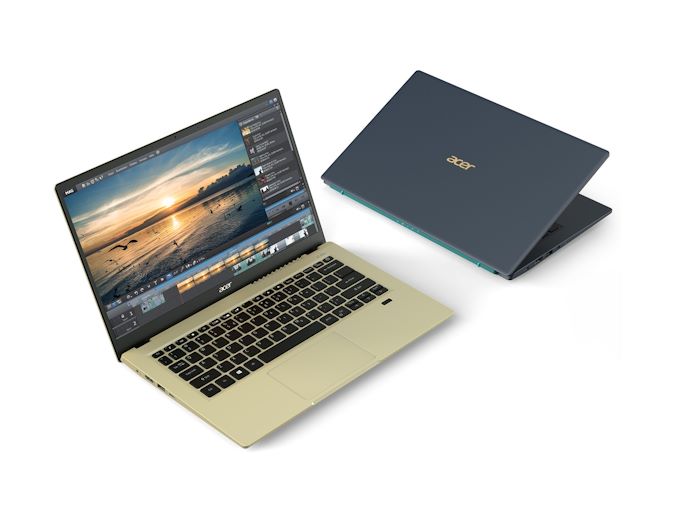
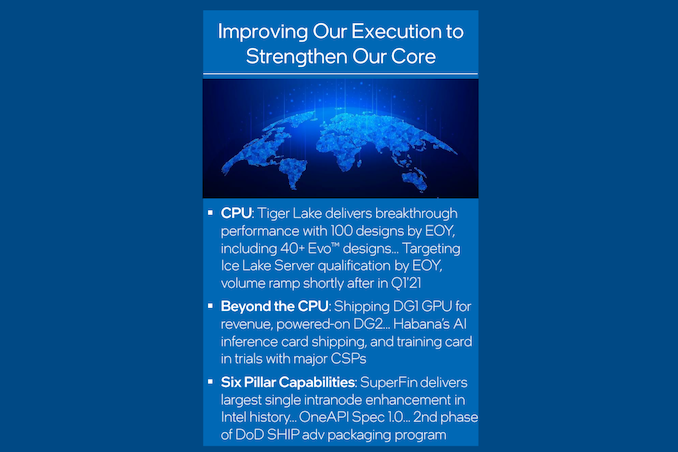
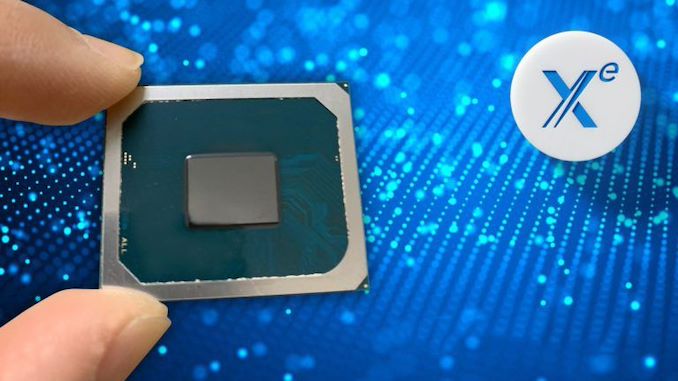
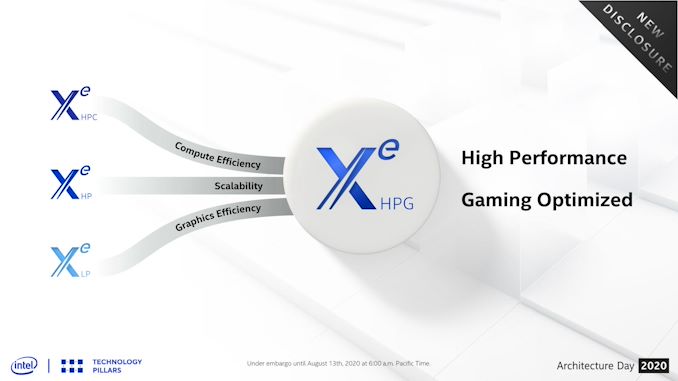
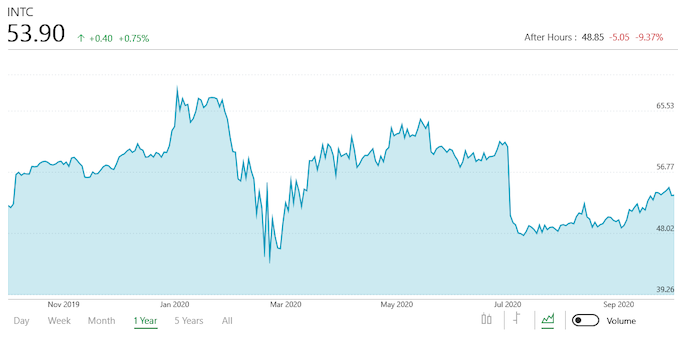
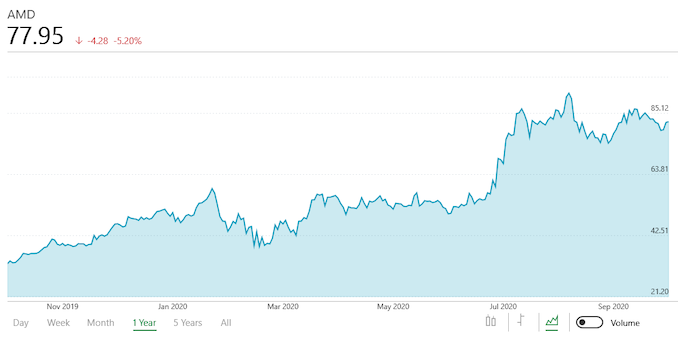
















Bookmarks